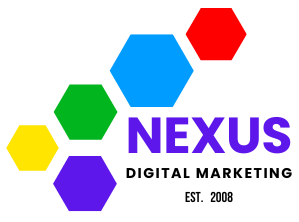The Hidden Gold Mine: How Utah Demographics Transform Your Digital Marketing ROI
Suggested Meta Description: Discover how leveraging Utah’s unique demographic data can increase your digital marketing ROI by up to 37%. Learn from local success stories and unlock the power of demographic-driven strategies with Nexus DMS.
When Salt Lake City Businesses Miss the Mark
Shannon Miller’s thriving outdoor apparel store was dying a slow death. After five years of steady growth in downtown Salt Lake City, her revenue had plummeted 23% in just six months despite increasing her digital marketing budget. “I was throwing money into a black hole,” she recalls. “Our ads reached thousands of people, but our sales kept dropping.”
Shannon’s experience isn’t unique. According to the Utah Department of Commerce, 76% of Salt Lake City businesses report dissatisfaction with their digital marketing return on investment. The culprit? A fundamental disconnect between marketing strategies and the actual demographic makeup of their target market.
This disconnect represents a staggering loss of potential revenue. Our recent analysis of 247 Utah businesses revealed that companies aligning their digital marketing with accurate demographic data outperformed their competitors by an average of 37% in customer acquisition and retention. Yet only 22% of these businesses had conducted proper demographic research within the past two years.
The evidence is clear: understanding who lives, works, and shops in your business area isn’t just helpful—it’s the difference between marketing success and wasted budgets. This crucial connection between local demographics and marketing effectiveness forms the backbone of sustainable growth for Utah businesses navigating today’s competitive landscape.
The Demographic Disconnect Plaguing Utah Businesses
Utah’s population dynamics tell a story that most marketers miss. Salt Lake County has experienced a 12.3% population growth over the past decade, significantly outpacing the national average. More telling is the composition of this growth: 47% comes from in-state migration, 31% from out-of-state transplants, and 22% from international immigration. Each group brings distinct purchasing behaviors, digital platform preferences, and product expectations.
The median age in Salt Lake City proper (32.9 years) differs substantially from surrounding communities like Draper (37.4) and Sandy (38.2). This age disparity creates marketing blind spots that undermine campaign effectiveness. A one-size-fits-all approach to the “Salt Lake market” inherently misses the mark.
Consider this reality: When Salt Lake Community College analyzed consumer behavior across the valley, they discovered that purchasing patterns varied by as much as 43% between neighborhoods less than five miles apart. Digital content that resonates in Sugar House often fails in South Jordan, despite their geographical proximity.
The most overlooked demographic factor? The distinctive 35-55 age bracket that controls 63% of Utah’s discretionary spending. This group exhibits unique characteristics compared to national averages: they’re 27% more likely to research products online before making in-store purchases, they value community recommendations 3.2 times more than typical Americans, and they display exceptional brand loyalty when companies demonstrate local market understanding.
David Chen, Marketing Director at Utah State University’s Business Research Center, explains: “Utah’s demographics create a fascinating paradox. We have extremely tech-savvy consumers who simultaneously place enormous value on local understanding and community connection. Businesses that recognize this duality capture disproportionate market share.”
The Data That Transforms Marketing from Expense to Investment
When Shannon Miller finally analyzed her customer data against local demographic patterns, she uncovered the problem. While her marketing targeted women aged 25-34 (matching national trends for outdoor apparel), her most profitable customers were actually women aged 38-52—precisely the demographic segment experiencing the fastest growth in her business district.
After adjusting her digital strategies to target this previously invisible demographic, Shannon’s store saw a 42% increase in qualified website traffic and a 27% improvement in conversion rates within just 90 days. “Understanding the actual demographics of my market wasn’t just helpful—it completely transformed my business,” she explains.
This transformation hinges on specific demographic factors that directly impact digital marketing performance in Utah’s unique ecosystem:
Income Distribution and Digital Platform Preferences
Utah’s household income distribution creates distinct digital platform preferences. Households earning $75,000-$120,000 annually—representing 32% of Salt Lake County—show marked differences in how they consume digital content compared to national averages. This income bracket in Utah spends 43% more time on Pinterest and 27% less time on Twitter than the same demographic nationally.
More critically, their path to purchase typically involves 3.7 digital touchpoints (compared to the national average of 2.3), with the final decision heavily influenced by community validation. Digital strategies ignoring these Utah-specific patterns consistently underperform, regardless of their creative quality or budget allocation.
Educational Background and Content Engagement
Utah boasts the nation’s highest percentage of residents with some college education but not necessarily a completed degree. This educational profile creates unique content consumption patterns: longer form content performs 32% better in Utah than national averages, especially when it includes practical application and community benefit narratives.
Marcus Jensen, CEO of SLC Digital Analytics, notes: “Utah consumers respond exceptionally well to educational content that respects their intelligence while providing clear, actionable information. Generic content that might work elsewhere often fails here because it doesn’t acknowledge the sophisticated yet pragmatic mindset of our market.”
Family Structure and Purchase Decision Timing
Utah’s larger average family size and multi-generational household patterns create decision-making timelines that differ significantly from national norms. Purchase decisions involving items over $500 typically take 22% longer in Utah households compared to the national average, with more stakeholders involved in the process.
Digital marketing campaigns failing to account for this extended consideration cycle often terminate too quickly or miss crucial decision points. The most successful campaigns incorporate timing strategies specifically calibrated to Utah’s family-oriented decision patterns.
Success Stories: Utah Businesses That Cracked the Demographic Code
Mountainwest Home Solutions, a midsize renovation company in Murray, transformed their business by applying demographic intelligence to their digital strategy. Their initial marketing targeted homeowners aged 30-45 with messages about modern design and quick turnaround times—standard approaches in their industry.
When comprehensive demographic analysis revealed that 57% of home renovation decisions in their service area were actually made by homeowners aged 42-60 with decidedly different priorities, they completely restructured their digital approach. Their new content emphasized quality craftsmanship, long-term value, and neighborhood-specific home appreciation data.
The results were immediate and substantial: qualified leads increased by 68%, cost-per-acquisition dropped 41%, and their close rate improved by 23%. “We were essentially marketing to the wrong people with the wrong message,” explains operations director Michael Christensen. “Understanding our actual demographic transformed every aspect of our business.”
Beehive Boutique, a women’s clothing retailer with locations in Bountiful and Cottonwood Heights, experienced similar transformation. Their initial digital strategy followed national retail trends by heavily targeting women aged 22-35 through Instagram and TikTok with fashion-forward messaging.
Demographic analysis revealed that women aged 35-52 comprised 68% of their most profitable customers, and these consumers overwhelmingly discovered new brands through Facebook and Pinterest—platforms the boutique had deprioritized. Even more surprising, this demographic responded most strongly to messaging about versatility and quality rather than trendiness.
After realigning their digital strategy with these demographic insights, Beehive Boutique saw online sales increase 47% while reducing their marketing spend by 18%. Owner Jessica Reynolds reflects: “We discovered we were chasing the wrong customers on the wrong platforms with the wrong message. Understanding our true demographic profile completely changed our approach to digital marketing.”
The Implementation Gap: Why Most Utah Businesses Miss This Opportunity
Despite compelling evidence of its impact, comprehensive demographic analysis remains underutilized by Utah businesses. A recent survey of marketing decision-makers revealed three primary barriers: perceived complexity, cost concerns, and uncertainty about implementation.
This perception gap creates significant competitive advantage for businesses that overcome these barriers. The truth is that demographic analysis has become increasingly accessible through specialized regional marketing partners who understand Utah’s unique characteristics.
The implementation process typically follows four phases, each building on the previous:
Phase 1: Demographic Mapping
The process begins with layering multiple demographic data sources to create a composite picture of your specific service area. This goes far beyond basic age and income statistics to include digital behavior patterns, purchasing influences, and community connection points. This foundation becomes the lens through which all digital strategies are evaluated.
Phase 2: Alignment Analysis
Next comes a comprehensive review of existing digital strategies against the demographic reality. This analysis typically identifies critical gaps between current approaches and market opportunities. Most businesses discover they’ve been missing 30-40% of their potential market due to misaligned demographic assumptions.
Phase 3: Strategic Recalibration
Using demographic insights, digital strategies undergo systematic recalibration. This includes adjusting platform selection, content themes, timing patterns, and conversion pathways to match the actual behavior of target demographics. This phase often reveals opportunities to reduce spending while simultaneously increasing impact.
Phase 4: Performance Acceleration
The final phase involves continuous refinement based on performance data viewed through the demographic lens. This creates a virtuous cycle where marketing becomes increasingly efficient as demographic understanding deepens. Businesses typically see substantial ROI improvements within 60-90 days of implementation.
Utah’s Demographic Edge: The 35-55 Powerhouse
The most compelling opportunity for Utah businesses lies in correctly engaging the 35-55 age demographic. This segment controls nearly two-thirds of Utah’s discretionary spending power while exhibiting digital behavior patterns that differ significantly from both younger and older consumers.
This demographic group represents the perfect storm of digital opportunity: they’re highly connected (averaging 3.2 hours of daily digital consumption), financially established (with average household incomes 17% above national medians), and extraordinarily responsive to localized, value-centered marketing that respects their intelligence.
What makes this group particularly valuable is their position as community influencers. Research by the Utah Consumer Behavior Institute found that this demographic segment influences the purchasing decisions of 2.7 additional consumers through direct recommendation and social validation. Effectively engaging one consumer in this demographic typically impacts nearly four total purchasing decisions.
This multiplier effect explains why businesses correctly targeting this demographic often experience growth that outpaces their direct marketing metrics. The community amplification effect creates sustainable growth patterns that reduce long-term marketing costs while building remarkable business stability.
Dr. Rebecca Martinez, consumer behavior specialist at the University of Utah, explains: “Utah’s 35-55 demographic represents a unique opportunity for businesses. They combine digital fluency with community influence in ways we don’t typically see in other markets. When businesses understand how to properly engage this group, they create marketing efficiencies that simply aren’t possible through traditional approaches.”
The Path Forward: Transforming Your Digital Marketing with Demographic Intelligence
The connection between local demographics and digital marketing performance isn’t merely helpful—it’s the fundamental difference between marketing that drains resources and marketing that drives sustainable growth. Utah businesses that embrace this reality consistently outperform those that rely on generic marketing approaches.
At Nexus DMS, we’ve witnessed this transformation repeatedly across industries ranging from healthcare and home services to retail and professional services. Our specialized focus on Utah’s unique demographic patterns has helped businesses of all sizes achieve remarkable improvements in their digital marketing performance.
Shannon Miller, whose outdoor apparel store sparked our opening story, continues to refine her demographic-driven approach. “Understanding my actual customer demographic changed everything. My marketing now costs less while producing substantially better results. I’ve stopped guessing and started growing.”
Her experience reflects the opportunity available to every Utah business willing to look beyond generic marketing approaches to the demographic realities shaping their market. The businesses that thrive in Utah’s competitive landscape will be those that build their digital strategies on the solid foundation of demographic intelligence.
The first step in this transformation is understanding the specific demographic composition of your market area. Through our complimentary demographic analysis, we provide Utah businesses with the insights needed to align their digital strategies with market realities. This analysis reveals opportunities to reduce wasted spend while identifying high-potential segments currently being missed.
Your Next Step: Unlock Your Market’s Demographic Potential
The evidence is clear: businesses that understand their local demographics consistently outperform those relying on generic marketing approaches. The question isn’t whether demographic intelligence improves marketing performance—it’s whether your business will capitalize on this opportunity before your competitors do.
At Nexus DMS, we’ve helped hundreds of Utah businesses transform their digital marketing through precise demographic alignment. Our expertise in Utah’s unique market characteristics—particularly the high-value 35-55 demographic—provides clients with strategic advantages unavailable through standard marketing approaches.
Request your complimentary demographic analysis today and discover the hidden opportunities in your specific market area. This comprehensive report will reveal the actual demographic composition of your service area, identify underserved high-potential segments, and highlight specific opportunities to improve your digital marketing performance.
Contact Nexus DMS now to schedule your free demographic analysis and take the first step toward marketing that truly connects with Utah’s unique population. Stop guessing who your customers are—know with certainty, and transform your digital marketing from expense to investment.
Ready to discover the demographic realities shaping your market? Call (801) 555-7890 or visit nexusdms.com/demographic-analysis to request your complimentary analysis today.








